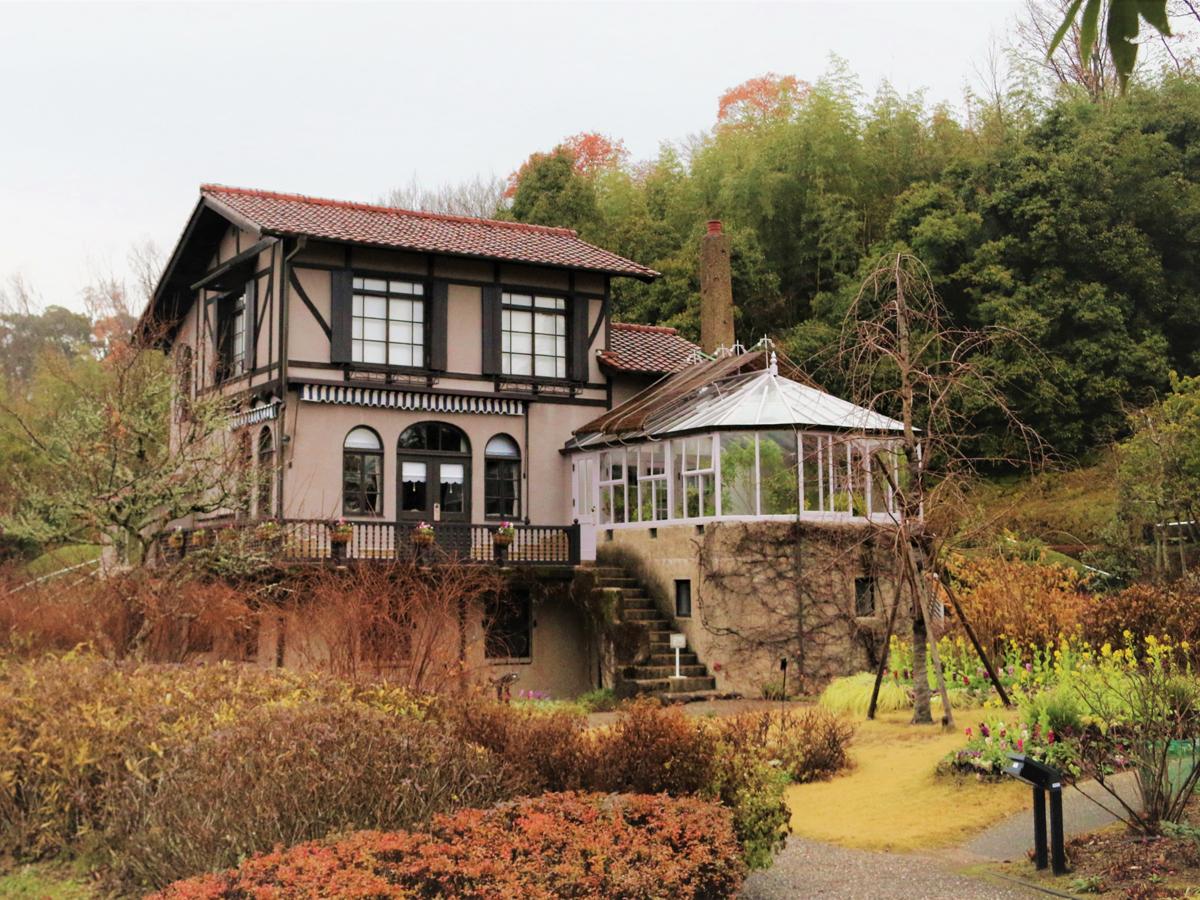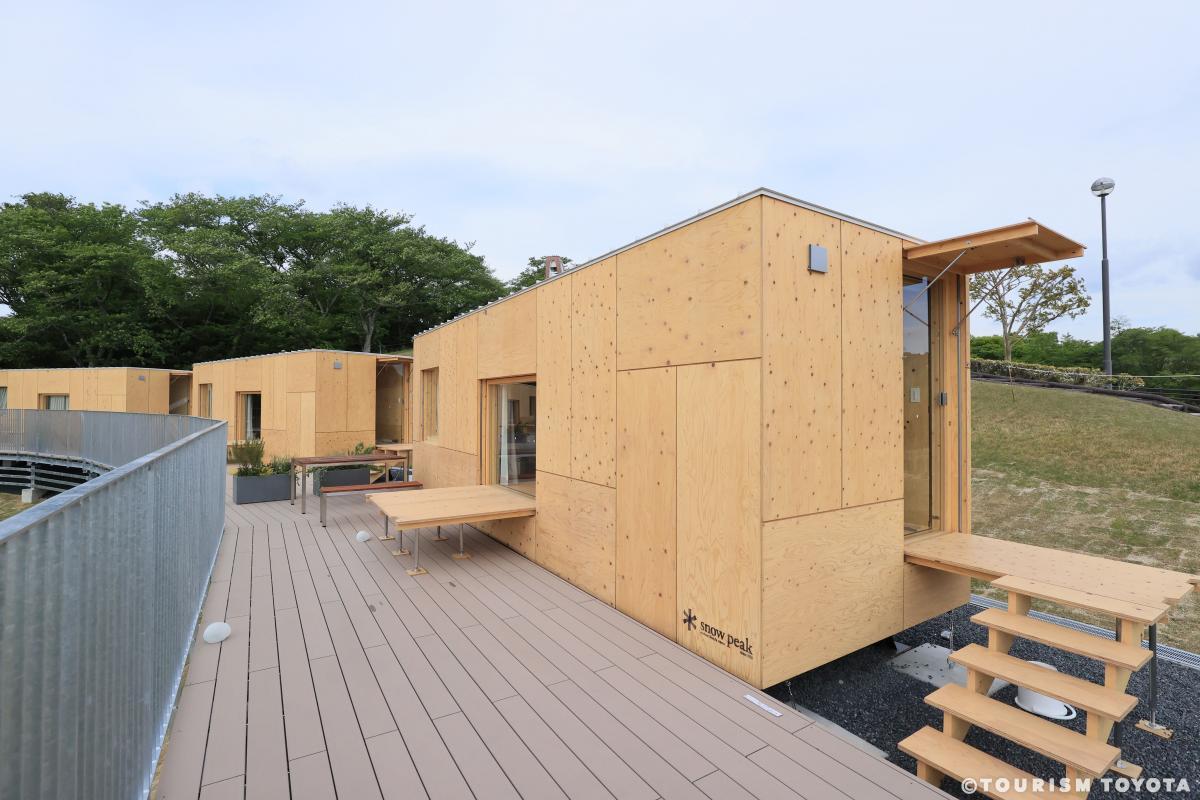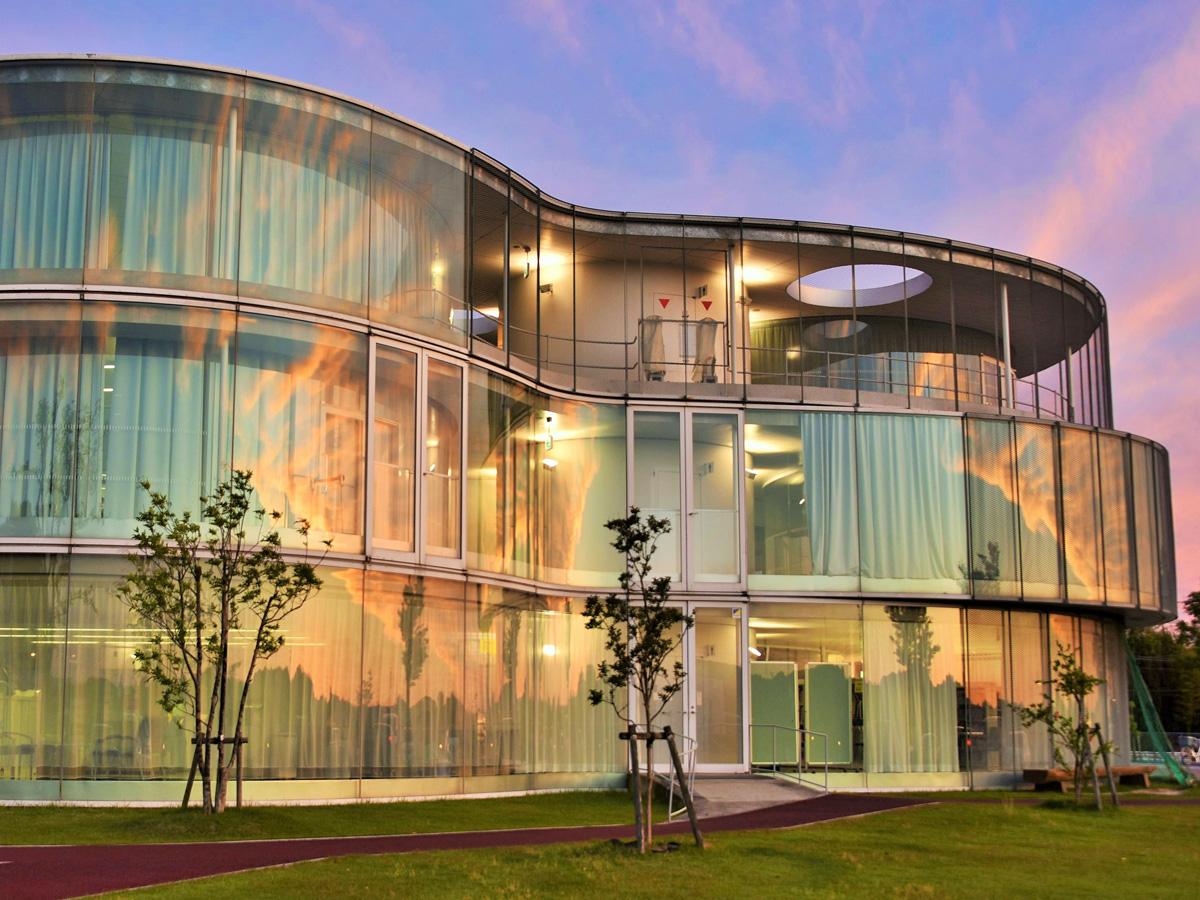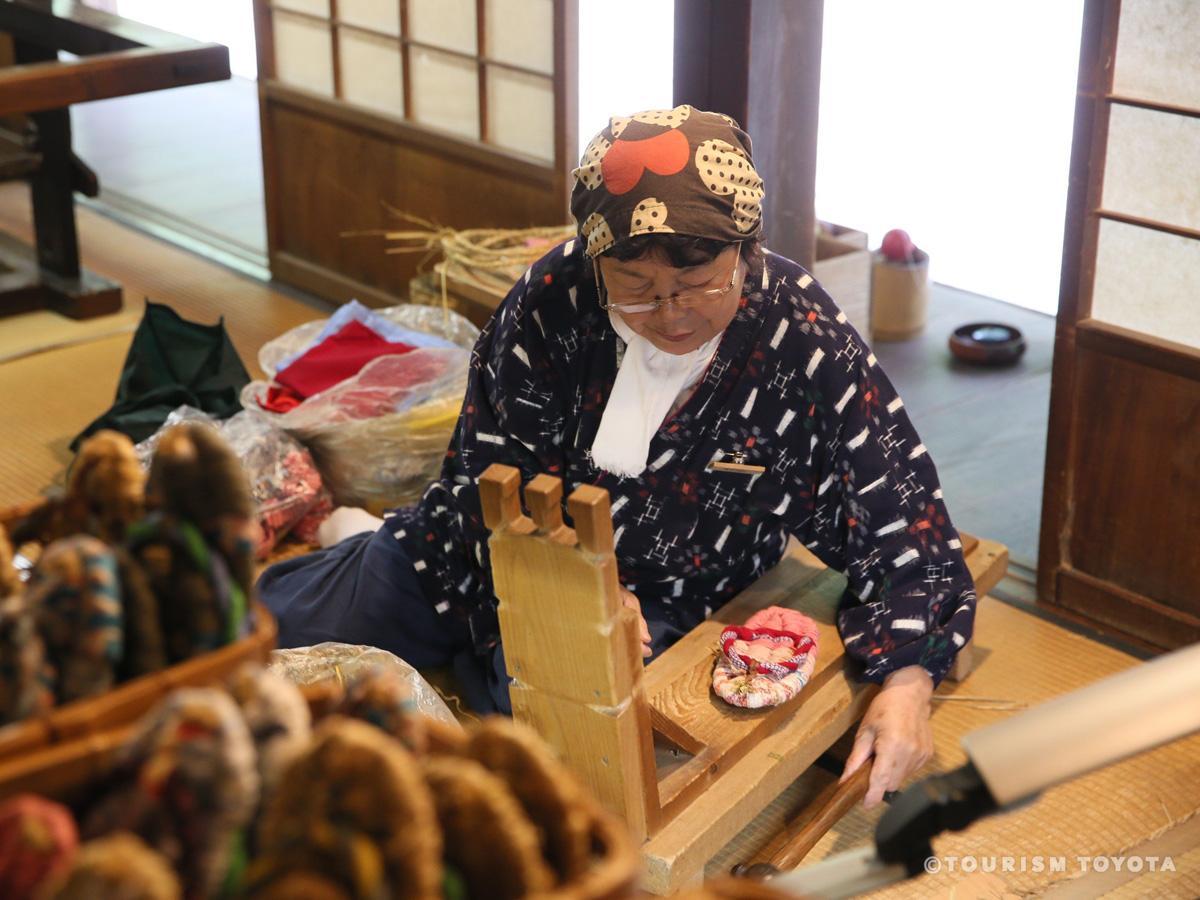From Retro to Modern: Toyota’s Picturesque Architecture

A large number of buildings designed by famous architects are to be found in Toyota City. In addition, this feature introduces buildings with charming retro façades that are fun just to look at.
Toyota Stadium and Toyota-Ohashi Bridge
Design / Kurokawa Kisho
Completed in 2001, Toyota Stadium specializes in sports such as soccer and rugby. The stadium takes pride in being second in scale nationally after Saitama Stadium 2002. Toyota Stadium can accommodate up to 44,380 people. The huge roof is suspended by four masts and cables that extend into the sky, forming a beautiful curve in this impressive construction. Together with Toyota-Ohashi Bridge, which connects the downtown area and the stadium, the late Aichi-born architect Kisho Kurokawa handled the construction of this beloved city symbol.
Kurokawa Kisho (1934–2007), founder of the Metabolist movement in Japanese architecture and the designer of Tokyo’s Nakagin Capsule Tower, Kuala Lumpur International Airport, and other landmark buildings, designed the Toyota Ohashi Bridge (opened in 1999) to commemorate the 50th anniversary of Toyota City and also Toyota Stadium (opened in 2001). The bridge leads from central Toyota to the stadium, and its arches complement the curve of the stadium’s roof. Toyota’s other bridges over the Yahagi River include the arched Heisei Memorial Bridge, the Kyucho Bridge, and the striking Yahagigawa Bridge (also known as Toyota Arrows Bridge).
Toyota Municipal Museum of Art
Design / Yoshio Taniguchi
The Toyota Municipal Museum of Art opened in 1995 and was designed by Taniguchi Yoshio (b. 1937), who went on to lead the redesign of the Museum of Modern Art in New York City. Taniguchi says that he created the Toyota Municipal Museum of Art building to take visitors on “a journey into the magic of art.”
The modernist building is a work of art in its own right. It stands on a hill with sweeping views of the city and is connected by an outdoor terrace with a reflecting pool and a sculpture garden designed by American landscape architect Peter Walker (b. 1932). The surrounding trees hide the museum from view so that it only gradually reveals itself to approaching visitors. The interior has been designed to present visitors with a series of shifting light environments; the ground floor is dark while the upper floors are brighter and more spacious.
The Dojien Teahouse at the museum was designed by Taniguchi to highlight the similarities between traditional Japanese and modern architecture, such as minimalism, clean lines, and a flexible use of space. The Takahashi Setsuro Gallery, also designed by Taniguchi, is housed in a separate wing of the museum dedicated to the works of pioneering lacquer artist Takahashi Setsuro (1914–2007).
The provisionally named Toyota City Museum is scheduled to open nearby in 2024. The new museum is designed by Ban Shigeru (b. 1957)—the architect behind the Centre Pompidou-Metz in France and the Oita Prefectural Art Museum—and will be dedicated to the city’s history, culture, and natural environment. It will have its own landscape garden designed by Peter Walker and an outdoor plaza.
Takahashi Setsuro Gallery
Adjacent to the Toyota Municipal Museum of Art, the Takahashi Setsuro Gallery features exhibits by lacquerware artist Takahashi Setsuro (1914-2007).
The building was also designed by Yoshio Taniguchi, the same architect as the Toyota Municipal Museum of Art.
The site exhibits fascinating items like lacquered folding screens and panels using the soukin technique of line-engraving with gold leaf or powder. Ink paintings, lacquer prints, and other works are also on display.
Toyota Municipal Museum of Art >>
Toyota Kuragaike Commemorative Hall
Design / Sejima Kazuyo
Toyota Kuragaike Commemorative Hall, a museum dedicated to the history of the Toyota Motor Corporation, was built in 1974 from a modernist design by Maki Fumihiko (b. 1928), best known for designing the Spiral building in Tokyo and the Yerba Buena Center for the Arts in San Francisco. Located in Kuragaike Park, the museum celebrates the company’s achievements and serves as a guesthouse for visiting VIPs.
Toyoda's Former Residence
Design / Toyoda Kiichiro
Next door is the former residence of Toyota founder Toyoda Kiichiro (1894–1952), a three-story 1930s house designed with a mixture of Japanese and Western elements by Suzuki Teiji (1870–1941), who is often called the father of modern architecture in Nagoya.
Jyubako(Kuragaike Park)
Design / Kuma Kengo
Five tiny mobile houses in Kuragaike Park are available for luxury accommodation. Designed by Kuma Kengo (b. 1954), the architect behind Tokyo’s National Stadium and French cultural center FRAC Marseilles, these “Jyubako” (literally, “living boxes”), as Kuma calls them, are part of the “tiny house” movement worldwide. Kuma created the “Jyubako” design in collaboration with outdoor brand Snow Peak as a way to maximize the space and comfort of a mobile home, while offering the opportunity to engage with nature.
Five tiny mobile houses in Kuragaike Park >>
Toyota City Aizuma Exchange Center
Design / Sejima Kazuyo
The Toyota City Aizuma Exchange Center, a community hub, was designed by Sejima Kazuyo (b. 1956), whose firm SANAA also conceived the New Museum in New York City and the 21st Century Museum of Contemporary Art in Kanazawa. Sejima is the second woman to win the Pritzker Prize (shared with her partner at SANAA, Nishizawa Ryue). Her design for the curved building is characterized by transparency, with floor-to-ceiling glass windows and walls in its meeting rooms, meaning people both outside and inside can observe what is happening.
Toyota City Aizuma Exchange Center >>
Kirakutei
Located within the grounds of the Toyota Sangyo Bunka Center, Kirakutei is a modern Japanese-style building from the late Taisho and early Showa periods. Formerly a restaurant and hotel, many famous guests stayed at Kirakutei, among them politician Korekiyo Takahashi, Prince Takamatsu, and actress Yaeko Mizutani.
400-year-old pine trees from Shiyogenji Temple in Toyota City's Hirokawa-cho were used as construction materials, while the roof tiles carved with the characters for "kiraku" are said to have been handcrafted by tile master Tsuzuki from Toyota City's Ichigi-cho.
Toyota City Folk Craft Museum
The First Folk Craft Hall was constructed from part of The Japan Folk Crafts Museum in Komaba, Tokyo established by Dr. Muneyoshi Yanagi, the founder of the Japanese Folk Craft Movement.
With the support of Shizuo Honda, industrialist, scholar of ancient ceramics, and honorary citizen of Toyota City, the city acquired and opened the museum in 1983. In coordination with the changing seasons at Hiratobashi Park, the museum plans exhibitions four times per year where visitors are able to come in contact with delightful handiwork and the origins of craftsmanship.
Toyota City Folk Craft Museum >>
Sanshu Asuke Yashiki Museum
Sanshu Asuke Yashiki Museum is a living folk culture museum that first opened in 1980. A recreation of the former villa of a wealthy farming family, the rear house, main house, and bamboo house feature a thatched-roof, wooden construction. Here, ten different handicrafts that were once a part of mountain life in this region such as charcoal making, papermaking, woodworking, and weaving are demonstrated by artisans.
Sanshu Asuke Yashiki Museum >>
Also Recommended!
Two Other Popular Spots You'll Want to Visit!
◆Toyota City Concert Hall
On the 10th floor of Toyota Sangohkan is Toyota City Concert Hall, a dedicated music hall that boasts a warm, natural space of marble and wood.
In the front part of the hall is a pipe organ built in the North German Baroque style. A symbol of the concert hall, this organ reverberates with a magnificent tone quality.
Toyota City Nohgakudo
On the 8th floor of Toyota Sangohkan is Toyota City Nohgakudo, with a gabled-roof stage made completely of Japanese cypress wood that will transport you to the world of classical Japanese performing arts.
Designed to resemble the stages of the Momoyama period, this theater is used not only for Noh and Kyogen plays, but also for other traditional performing arts such as Japanese music played on the koto, shamisen, and shakuhachi or Japanese dance.












































